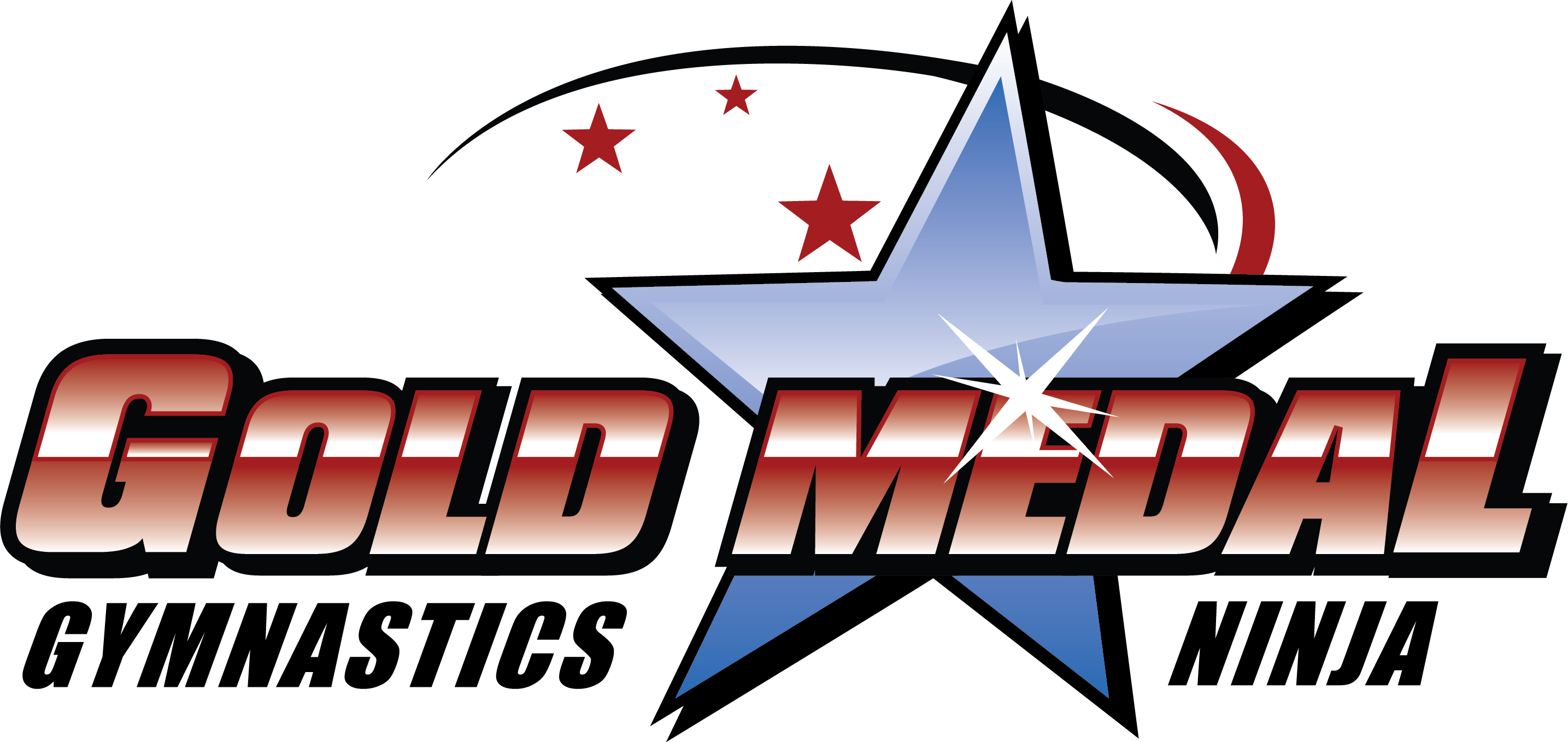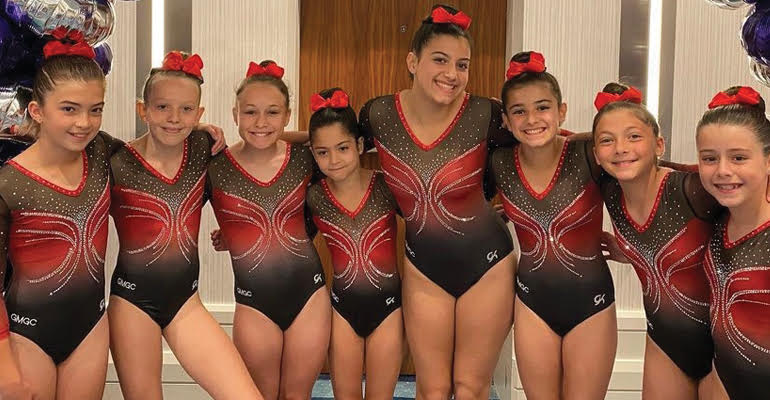As a parent or aspiring gymnast, navigating the USA Gymnastics (USAG) level system can be both exciting and overwhelming. This comprehensive guide will walk you through the intricacies of each level, helping you understand the progression and requirements for gymnasts in 2024.
Picture your child mastering a perfect cartwheel, then progressing to back handsprings, and eventually performing complex aerial maneuvers. The USAG level system is designed to guide this journey, ensuring safe and steady advancement in skills and competition readiness.
Ready to see where your gymnast fits in the USAG level system? Explore the programs at Gold Medal Gymnastics & Ninja to find the perfect fit for your aspiring athlete!
On This Page
Overview of USAG Gymnastics Levels
The USAG level system is structured to provide a clear pathway for gymnasts to develop their skills and compete at appropriate levels. Here’s a brief overview:
- Developmental Levels: Levels 1-3
- Compulsory Levels: Levels 4-5
- Optional Levels: Levels 6-10
- Elite Level: Beyond Level 10
Let’s dive deeper into each category and level.
Developmental Levels (1-3)
These levels focus on building a strong foundation of basic skills and are typically non-competitive.
Level 1
- Focus: Basic body positions, simple dance elements, and introductory skills on all apparatus.
- Key Skills: Forward roll, cartwheel, basic jumps and leaps.
Level 2
- Focus: Expanding on Level 1 skills with more complex combinations.
- Key Skills: Back roll, handstand, round-off, pull-over on bars.
Level 3
- Focus: Introducing more dynamic movements and beginning acrobatic skills.
- Key Skills: Backbend kickover, back handspring (floor), kip swing (bars).
Compulsory Levels (4-5)
These levels introduce competition with standardized routines for all gymnasts.
Level 4
- Competition: First required competitive level with standardized routines.
- Key Skills: Back walkover, stride jump, cast to horizontal (bars).
Level 5
- Competition: Continued standardized routines with increased difficulty.
- Key Skills: Back handspring (beam), flyaway dismount (bars), front handspring (vault).
Optional Levels (6-10)
These levels allow for personalized routines within specific skill requirements.
Level 6
- Focus: Transition to optional routines with specific skill requirements.
- Key Skills: Giant swings (bars), back tuck (floor), more complex dance elements.
Level 7
- Focus: Increased difficulty in optional routines.
- Key Skills: Clear hip circle (bars), aerial cartwheel (beam), front tuck (floor).
Level 8
- Focus: Introduction of C-level skills.
- Key Skills: Release moves on bars, back layout (floor), more complex series on beam.
Level 9
- Focus: Higher level of difficulty and execution.
- Key Skills: Multiple release moves on bars, advanced tumbling combinations.
Level 10
- Focus: Highest level of optional competition before Elite.
- Key Skills: Complex release combinations on bars, difficult tumbling passes, high-level dance elements.
Elite Level
The Elite program is for gymnasts aspiring to compete at national and international levels, including the Olympics.
- Junior Elite: Ages 11-15
- Senior Elite: Ages 16+
Elite gymnasts perform significantly more difficult skills and routines compared to Level 10.
Progression Through Levels
Advancement through levels is based on skill mastery and meeting specific score requirements in competitions. Here are some key points:
- Skill Mastery: Gymnasts must demonstrate proficiency in all skills required for their current level before moving up.
- Score Requirements: Many gyms and regions require gymnasts to achieve certain all-around scores to advance to the next level.
- Age Considerations: While there are no strict age requirements for most levels, there are general age ranges where gymnasts typically compete at each level.
- Individual Pace: Every gymnast progresses at their own rate. It’s common for gymnasts to spend multiple seasons at the same level.
Competition Structure
Understanding the competition structure, and gymnastics teams, is crucial for gymnasts and parents:
- Local Meets: Usually the first type of competition for lower levels.
- State Championships: Gymnasts qualify based on scores from local meets.
- Regional Championships: Top performers from state competitions advance to regionals.
- National Championships: For Level 9, 10, and Elite gymnasts who qualify through regional competitions.
Training Commitments
As gymnasts progress through levels, training commitments typically increase:
- Levels 1-3: 1-3 hours per week
- Levels 4-5: 6-12 hours per week
- Levels 6-8: 12-20 hours per week
- Levels 9-10: 20-30 hours per week
- Elite: 30-40 hours per week
Gold Medal Gymnastics & Ninja offers class schedules tailored to each level, ensuring your gymnast receives the appropriate training time for their skill level.
Choosing the Right Level
Selecting the appropriate level for a gymnast involves several factors:
- Skill Proficiency: The gymnast should be comfortable with all skills required for their level.
- Physical Readiness: Consider strength, flexibility, and endurance.
- Mental Preparedness: Higher levels require increased focus and ability to handle pressure.
- Time Commitment: Ensure the training schedule aligns with other life commitments.
- Long-term Goals: Consider the gymnast’s aspirations in the sport.
Gold Medal Gymnastics & Ninja offers a variety of gymnastics programs designed to accommodate gymnasts at every level, from beginners to elite competitors.
Frequently Asked Questions
Q: How long does it typically take to progress through levels?
A: Progression varies greatly among individuals. Some gymnasts may spend one season at a level, while others may stay at the same level for several years. The focus should be on skill mastery rather than rapid advancement.
Q: Can a gymnast skip levels?
A: While it’s possible, it’s not common or generally recommended. Each level builds upon skills learned in previous levels, ensuring a strong foundation.
Q: What if my child wants to do gymnastics recreationally?
A: Gold Medal Gymnastics & Ninja offers recreational programs that teach gymnastics skills without the pressure of competition. These programs often follow a modified version of the level system.
Q: How do I know if my child is ready for Elite level training?
A: Elite training is extremely demanding and is typically only suitable for gymnasts who have excelled at Level 10 and have aspirations for national or international competition. Coaches usually identify potential Elite gymnasts based on exceptional skill, dedication, and physical aptitude.
Q: Are there differences in levels for male and female gymnasts?
A: Yes, while the concept of progressive levels is similar, the specific skills and apparatus differ for boys and girls gymnastics. Men’s gymnastics has its own level system with different apparatus and skill requirements.
Understanding the USAG gymnastics levels is crucial for both gymnasts and their supporters. It provides a clear pathway for skill development, ensures safety through progressive learning, and helps set realistic goals. Remember, the journey through gymnastics levels is unique for each athlete, and the focus should always be on personal growth, enjoyment of the sport, and overall well-being.
Whether your gymnast is just starting out or aiming for Elite status, the level system offers a structured approach to achieving their gymnastics dreams. With dedication, proper training, and support, your gymnast can thrive at any level they choose to pursue.
Curious about which USAG level is right for your gymnast? Contact Gold Medal Gymnastics & Ninja to have your athlete evaluated and placed in the appropriate program for their skill level and goals!


